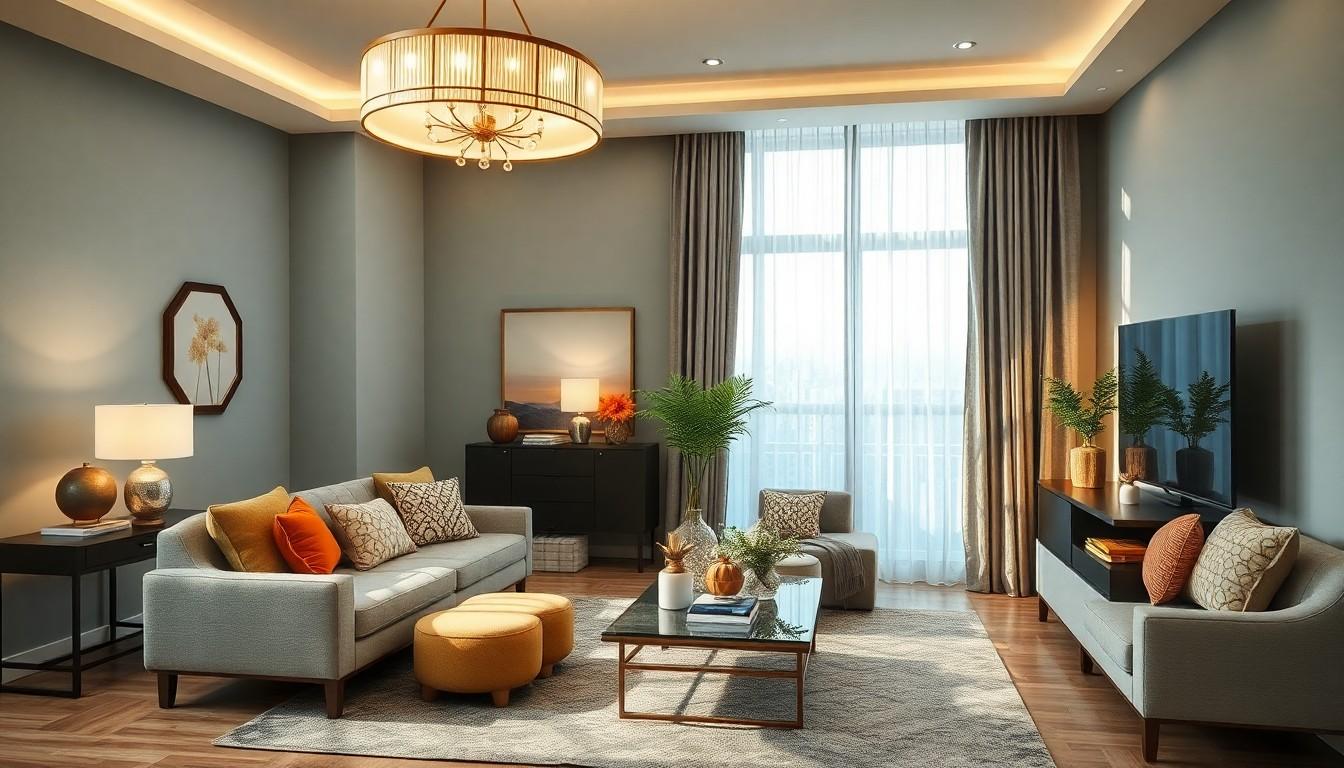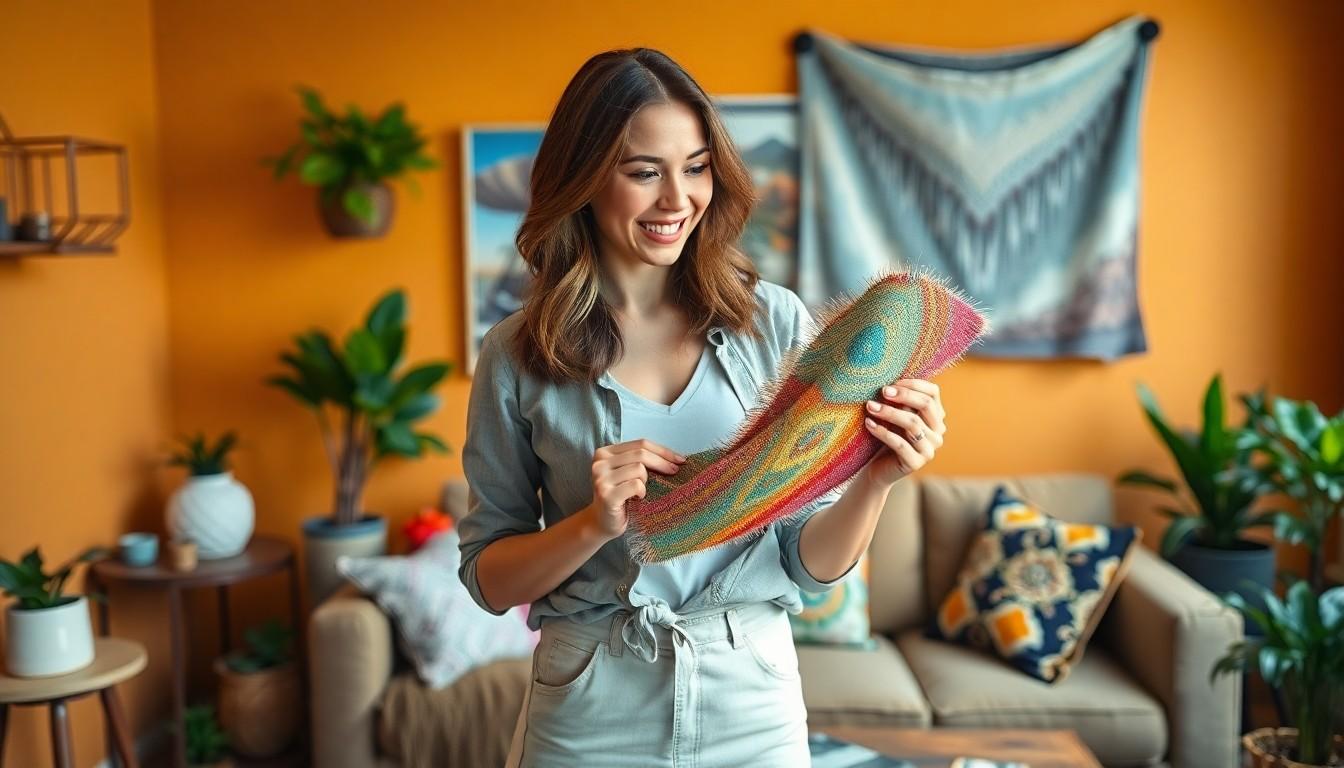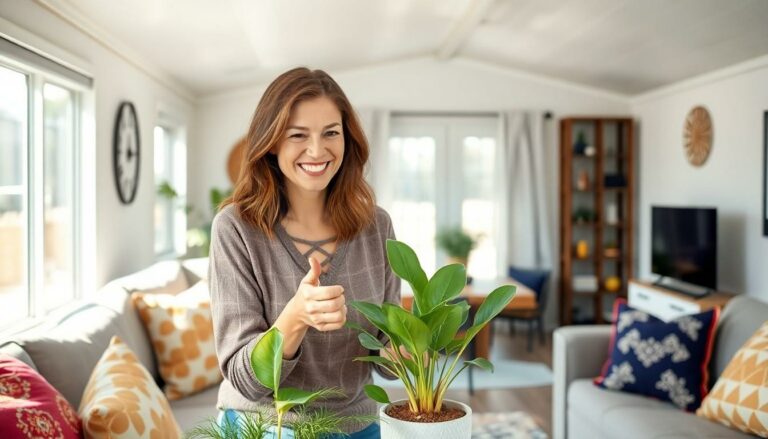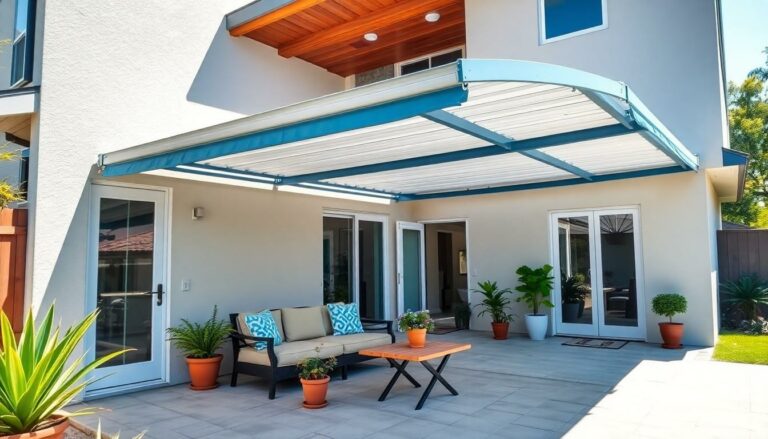Transforming a house into a home isn’t just about slapping a coat of paint on the walls and hoping for the best. It’s an art form that requires a sprinkle of creativity and a dash of style. Whether you’re channeling your inner Picasso or just trying to avoid the dreaded “builder beige,” home interior decorating can be both fun and rewarding.
Table of Contents
ToggleThe Importance of Home Interior Decorating
Home interior decorating enhances both functionality and aesthetics. It creates a space that reflects personal style and caters to individual needs. Customized interiors result in increased comfort and satisfaction for occupants.
Stylish decor fosters a positive ambiance, impacting mood and productivity. Environments with well-decorated spaces encourage relaxation and creativity. Research indicates that thoughtfully designed homes influence overall well-being and happiness.
Investing in interior decoration adds value to properties. Aesthetic upgrades appeal to potential buyers, significantly improving marketability. High-quality finishes and contemporary designs attract higher offers, ensuring better returns on investment.
Unique decorating choices encourage self-expression. Personal touches create a sense of belonging, making a house feel like a home. Friends and family appreciate distinctive design elements, often sparking conversations and connections.
Strategically chosen decor can improve functionality. Multifunctional furniture maximizes space in smaller areas, while specific arrangements promote efficient use of room layouts. Organized, visually pleasing spaces facilitate daily activities.
Lastly, home interior decorating allows individuals to embrace trends while showcasing personal flair. Keeping up with design trends broadens creativity, inspiring fresh ideas for interior transformation. Ultimately, successful decoration balances current styles with timeless elements, ensuring lasting appeal.
Key Elements of Home Interior Decorating

Home interior decorating combines creativity with functionality to create personalized spaces. Understanding key elements helps achieve a harmonious ambiance.
Color Schemes
Choosing a color scheme sets the emotional tone of a room. Bold colors can bring energy, while soft hues promote calmness. Incorporating accent colors adds depth and interest. Consider using a color wheel for guidance, as complementary colors provide contrast and balance. Neutral shades serve as a versatile backdrop, allowing for flexibility in decor choices. Selecting colors that align with personal style enhances overall satisfaction in the space.
Furniture Selection
Furniture selection plays a critical role in the comfort and functionality of a room. Prioritize functionality by choosing pieces that serve multiple purposes, especially in smaller spaces. Opt for styles that reflect personal taste, whether modern or traditional. Scale matters; oversized furniture can overwhelm a room, while smaller pieces may disappear. Comfort should never be sacrificed; seating should invite relaxation. Quality materials ensure durability and longevity, making furniture a worthwhile investment.
Lighting Design
Lighting design significantly impacts the atmosphere within a home. Layered lighting enhances functionality while creating visual interest. Consider using ambient lighting for overall brightness, accent lighting to highlight decor, and task lighting for specific activities. Natural light should be maximized; sheer curtains can invite brightness while offering privacy. Dimmer switches provide control over mood, enabling transitions from bright to soft lighting. Choosing stylish fixtures adds character, blending aesthetics with practicality.
Popular Home Interior Decorating Styles
Home interior decorating encompasses various styles that reflect personal taste and enhance living spaces. Each style offers unique elements and characteristics, catering to diverse preferences.
Modern Minimalism
Modern minimalism prioritizes simplicity and functionality. Clean lines and open spaces characterize this style. Neutral colors typically dominate, with occasional bold accents to maintain interest. Multi-functional furniture, such as a sofa bed or storage ottoman, optimizes limited space and enhances practicality. Additionally, minimal decor emphasizes essential items over clutter, fostering a serene atmosphere. This approach encourages natural light through large windows and reflects a connection with the outdoors.
Rustic Charm
Rustic charm brings warmth and comfort to interiors. Natural materials, like wood and stone, are key features of this style. Textures play an important role, with soft fabrics and cozy furnishings creating an inviting space. Earthy colors, such as browns and deep greens, enhance the overall ambiance. Vintage accents, like distressed furniture or antique decor, add character and history. Open shelving displays handmade items and treasured possessions, creating a personalized touch. Emphasizing a connection to nature, rustic charm evokes a sense of tranquility within the home.
Bohemian Vibes
Bohemian vibes celebrate individuality and creativity. An eclectic mix of patterns, colors, and textures defines this style. Layered textiles, such as patterned rugs or colorful throw pillows, contribute to a carefree atmosphere. Expressive artwork and global decor items showcase personal journeys and interests. Plants and greenery play a vital role, bringing life and freshness into any room. Unconventional furniture arrangements promote comfort and relaxation, fostering a sense of community. Ultimately, bohemian vibes reflect a laid-back lifestyle and encourage self-expression through decor choices.
Tips for Effective Home Interior Decorating
Effective home interior decorating combines creativity, functionality, and personal style. Thoughtful planning enhances both the aesthetic appeal and usability of a space, while accessorizing adds personality and charm.
Planning and Layout
Begin by assessing the available space. Analyze room dimensions and natural light sources to create a harmonious layout. Choose furniture sizes that complement the area without overwhelming it. Instead of crowding furniture, prioritize open pathways to encourage movement. Create functional zones for different activities, such as lounging, dining, and work. Use spatial arrangement to establish a focal point, like a statement piece or artwork. Organizing spaces promotes comfort and satisfaction.
Accessorizing Your Space
Adding accessories personalizes a home. Incorporate decorative items such as cushions, artwork, and plants for visual interest. Select colors and textures that align with the overall theme of the room. Use statement pieces, like oversized wall art or unique sculptures, to draw attention. Layering accessories creates depth and dimension, enriching the design. Prioritize practicality and aesthetics with functional accessories, like stylish storage solutions. Well-chosen accessories enhance the emotional connection to a space.
Home interior decorating is a journey of self-expression that transforms living spaces into reflections of personal style. By embracing creativity and mindful choices, individuals can create environments that not only look beautiful but also enhance their daily lives.
The right decor can elevate mood and productivity while ensuring comfort and functionality. As trends evolve, a balanced approach that incorporates timeless elements ensures lasting appeal.
Ultimately, investing time and effort into interior decoration pays off by adding value to homes and fostering a sense of belonging. With thoughtful planning and attention to detail, anyone can craft a space that truly feels like home.




